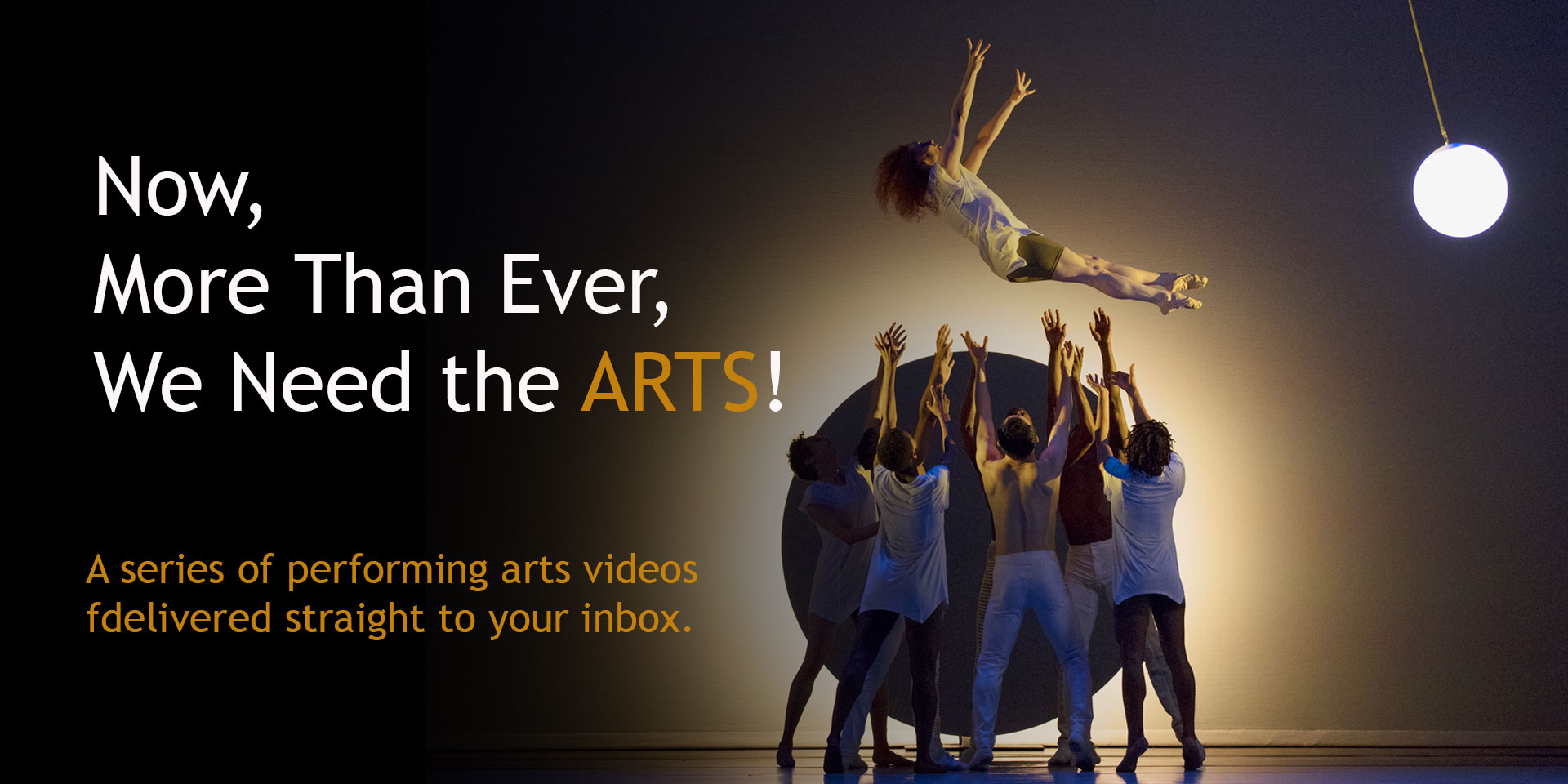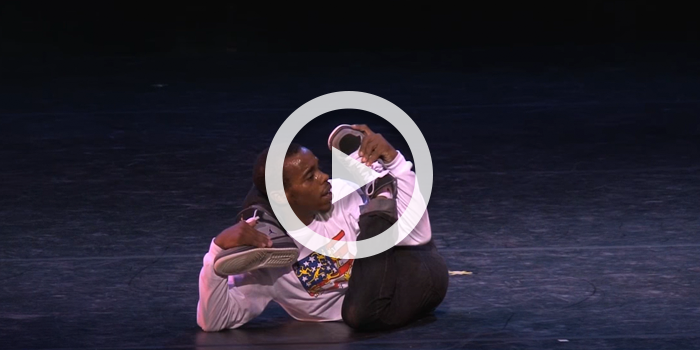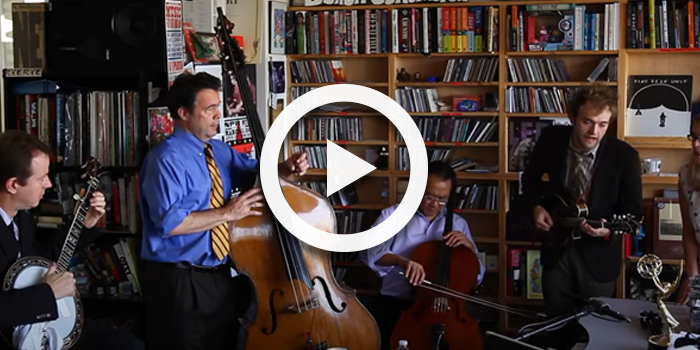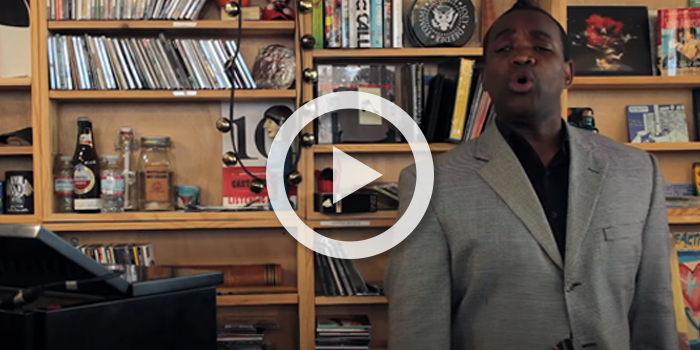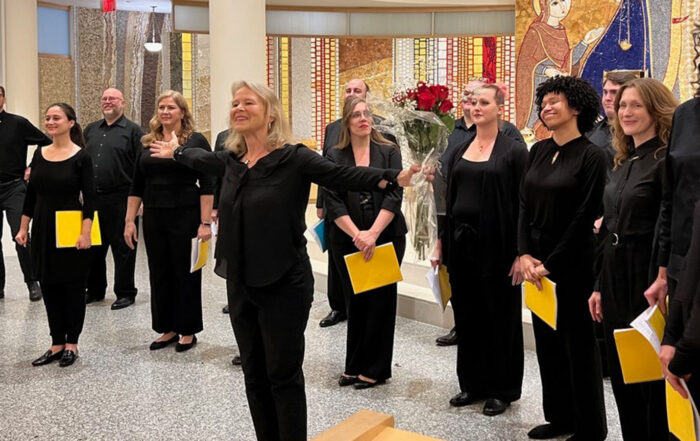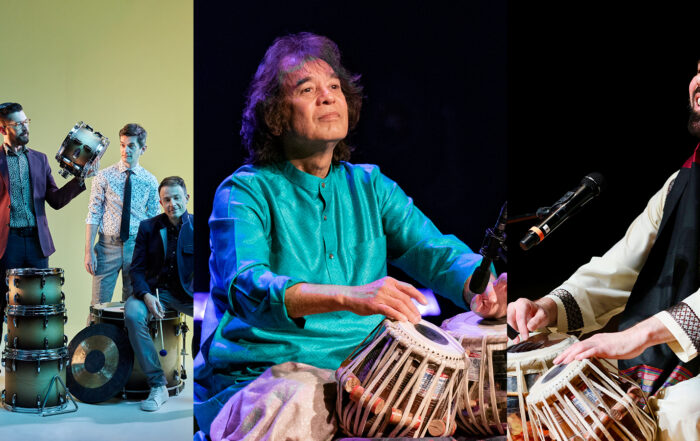In this issue: the Mariinsky Ballet and Orchestra/“Kingdom of the Shades” from La Bayadère; Caetano Veloso and Gilberto Gil/“Cada macaco no seu galho”; Aizuri Quartet/Gabriella Smith’s Carrot Revolution; Ignaz Friedman/two short works by Mendelssohn; English Baroque Soloists and the Monteverdi Choir/ Bach’s St John Passion
Now, More Than Ever: Issue 4
La Bayadère
“Kingdom of the Shades”
Mariinsky Ballet and Orchestra
Thinking back to the beginning of Cal Performances’ 2019–20 season, I keep recalling the exquisite beauty of this iconic scene from the great 19th-century story ballet La Bayadère, as performed by Saint Petersburg’s legendary Mariinsky Ballet and Orchestra. At that time, those particular performances were threatened by area-wide power outages caused by wildfires and windstorms then raging throughout Northern California. But happily, everything came together brilliantly that weekend, as audiences flocked to Zellerbach Hall to enjoy one of the most beloved of the great Russian classical ballets.
No other scene in La Bayadère so captures the magic of this remarkable piece—indeed, of the entire art form—as “The Kingdom of the Shades.” A striking feat of discipline, consistency, artistry, and imagination, what starts so simply and quietly develops gradually into what Arlene Croce memorably described in the New Yorker as a “a grand crescendo that seems to annihilate all time.” As the stage fills with these glorious embodiments of beauty and grace, it is the cumulative effect that makes it all so powerful.
Interestingly enough, this Mariinsky production, created for the Kirov Ballet and based on Marius Petipa’s original choreography, enjoyed enormous success in Russia but was virtually unknown in the West until 1961 (the first performance of any part was actually in Brazil and even then, it was presented only through this single scene).
Beautifully filmed here—perhaps too much so, given the various closeups and camera cuts that get a bit in the way—there is much to treasure in this video of a scene that today almost single-handedly defines the art of ballet. These are among the most striking visual images you’ll encounter on any stage, anywhere.
“Cada macaco no seu galho”
Caetano Veloso & Gilberto Gil
In 1968, Caetano Veloso and Gilberto Gil were two of the most talked-about musicians in all of Brazil (a country then suffering under totalitarian rule). Together, they had created the influential musical Tropicália movement, a celebratory marriage of Brazilian folk and high art through rock music and the avant-garde. Both men were imprisoned in 1968 for disrespecting the flag, the government warning that if they continued to write “political music,” they could expect even worse punishment. So, both artists fled to London, where they lived in self-imposed exile until 1972. Things changed for the better a few years later, and there’s actually a happy ending to this story. Gil not only returned to Brazil as a celebrated musician but eventually became the country’s Minister of Culture (a highpoint in the history of that nation’s government). In 1993, 25 years after the founding of Tropicália, the two men reunited for their new Tropicália 2 album. This is one of my favorite songs from that project, seen here from a concert in São Paulo that same year. The sounds may be more “defined” on the studio recording, but these visuals emphasize the rhythmic complexity—the cross-rhythms, the accents, the primal energy—that are hallmarks of the Tropicália movement. Apparently, the title translates as “Every monkey to his own branch,” which is a common Brazilian expression for, basically, “Mind your own business.”
Carrot Revolution
by Gabriella Smith
Aizuri Quartet
Gabriella Smith is a Berkeley baby—a former student at the Crowden School and at Berkeley High who then went on to study at the Curtis Institute of Music. She wrote this piece in 2015 for these musicians, the excellent Aizuri Quartet, the title referencing a Cezanne quote—“The day is coming when a single carrot, freshly observed, will set off a revolution”—and the piece celebrates such fresh ways of looking at familiar objects. With points of reference that range from Bach to Gregorian chant to folk songs to The Who (if you think you’re hearing a quote from “Baba O’Riley” at about three minutes into the piece, you’re not mistaken!), this is a thrilling assembly of spectacular musical effects, the sum of which is definitely greater than the individual parts. It’s amazing to me that Smith wrote this music when she was just 23 years old. You can clearly see why she is considered one of the most fascinating compositional voices of her generation.
Mendelssohn: Two short works
Ignaz Friedman, piano
A true “blast from the past,” Ignaz Friedman is likely a pianist whose name is not particularly familiar to US audiences (he never found much success here). A student of the great Ferruccio Busoni, he was one of the last direct links to the celebrated composer-performers of the 19th century. Jewish and from Poland (though living in Copenhagen for most of his career), Friedman enjoyed success in Europe in the years leading up to WWII. Fortunately, and just before the outbreak of hostilities, he secured a concert tour of Australia, where he would spend the rest of his life. What I love in these two short pieces by Mendelssohn (recorded in 1930, during an age in which editing audio recordings was impossible) is how Friedman communicates a true singing line (you would think the piano had a bellows beneath it) in the first piece (the Allegro non troppo from Songs Without Words [Book 3], Op. 38, No. 2), making the piano sound like a sustaining instrument. As for the second piece (the Scherzo from Three Fantasies or Caprices for Piano, Op. 16, No. 2), any pianist can tell you that playing fast, short, and soft is perhaps the most difficult challenge faced by a performer (something far easier to conceptualize than to realize at the keyboard). But in Mendelssohn’s Scherzo, this magnificent virtuoso dispenses the most finger-twisting passagework with an elfin touch that is utterly delightful.
Bach: St John Passion, BWV 245
First Chorus (“Herr, unser Herrscher!”)
English Baroque Soloists & Monteverdi Choir
Sir John Eliot Gardiner, conductor
This is a brilliant, complete performance of Bach’s St John Passion and I hope you’ll find time to listen to the entire work, especially in these days leading up to Easter. But for the time being, let’s just concentrate on the extraordinary first chorus, which concludes about eight minutes into this recording.
Bach’s Passions are frequently heard and performed during Holy Week, and each is a masterpiece. The St Matthew begins with a cinematic panorama that reflects on the overall story, but in the St John, we are launched immediately into one of the most compelling and terrifying crowd scenes in all of music. This is a prayer, but not a benediction, more a plea that sacrifice will not be in vain. From the roiling passagework in the strings to the oboes that enter in dissonances that resolve to consonances, there is incredible tension here, music that builds and builds until the chorus’ first entrance—an exclamation filled with angst, pain, terror, and the (we know) futile hope that this story will not end the way we know it will.
This is a BBC Proms performance, and it’s worth noting that the Royal Albert Hall, with a capacity of 5,000+ seats, is hardly a church. Though the setting—which lacks the reverberant acoustic for which the piece was composed—is far from an intimate chamber music space, the performance here transcends its surroundings.
Now, More Than Ever Full Playlist
Now, More Than Ever Spotify Playlist


